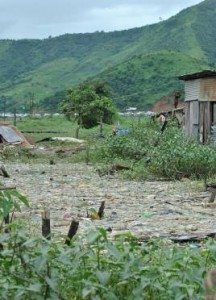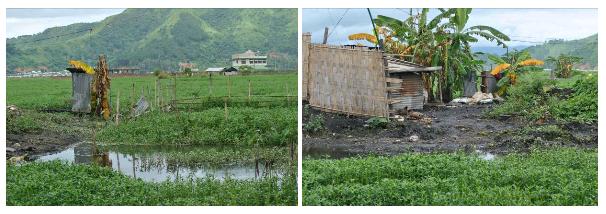By: Khuraijam Jibankumar Singh, FLS
Imphal Valley is the most fertile place in the state of Manipur. The valley is known for its centuries old civilization, rich culture and tradition, and rich diversity of plants and animals. The oval shaped valley is dotted by many wetlands. These wetlands provide many services like ecological services to the environment of the region and economic services to the people living around the wetlands. Loktak Lake located at the southern part of the valley is the largest wetland and has been recognised as Ramsar site. Efforts are being made since the last few decades to save this lake.

Among all the wetlands in the valley, Lamphelpat which is situated on the western part of the Imphal city is the most neglected wetland and its condition is the worst. A portion of the wetland is now converted into dumping site of waste materials generated from the Imphal Municipal areas. The private hospital and clinics located at its periphery are also dumping their waste materials into the wetland. There is no proper fencing of these dumping sites and the hazardous chemicals from the wastes are easily leached out into the wetland thereby affecting the quality of the water. The aquatic life and biodiversity of the wetland are severely affected. Since the last several decades, there is continuous rise in the encroachment of the wetland by the residents living near the wetland. Large portion of the wetland are now occupied by government offices resulting in the significant reduction of the size of the wetland. Every year during monsoon season, there is rise in the level of water in the wetland and the local residents living around the wetland and the encroached portion faced the problem of flood due to the absence of an effective drainage system. The residents are exposed directly to the hazardous chemicals from the waste material dumped in the wetland during the flood risking their health.


North East Centre for Environmental Education and Research (NECEER), Imphal conducted surveys during August 2011 in and around the wetland. It was observed that on the foothills of the Langol Hill Range and along the periphery of the wetland, large amount of wastes are dumped. These wastes are easily carried away by the water and get deposited at the wetland. At many places, waste materials are dumped near the tap water supply sites thereby risking the health of the people. There is complete lack of awareness among the people about the hazardous affect of dumping waste materials in water bodies. Along the roadsides, large amount of medical wastes are dumped by the private hospitals and clinics. All the government complexes including the sewage treatment plant site which are built inside the wetland were flooded.

Even after receding of flood water, the stagnant water consisting of several hazardous chemicals and micro-organisms possesses the chances of outbreak of various water-borne diseases. In July 2011, a team of Manipur Pollution Control Board test the presence of Escherichia coli (E.Coli) in the water of the wetland. Another problem that was observed during the survey was the absence of sanitary latrines in most of the households located around the wetland. This unhygienic lifestyle of the local inhabitants could led to many health related problems (Fig. 3).

Considering the situation of the wetland, there is urgent need of mobilisation of people living around the wetland about the importance of the wetland and the health problems that could be arise due to dumping of waste materials into it. Youth clubs and self help groups should join hands to check the illegal dumping of medical wastes by private hospital and clinics. A sense of responsibilities should be created among the people through awareness campaign and regular interactions. Strict rules should be imposed for illegal dumping and regular cleaning of waste materials should be done to avoid spreading of water borne diseases. The role of Government is very important in monitoring the dumping sites and checking further encroachment of the wetland. Proper concrete wall should be erected in order to avoid leaching of hazardous chemicals directly into the wetland.
[box] The article was sent to Kanglaonline.com by Khuraijam Jibankumar Singh, FLS [/box]



